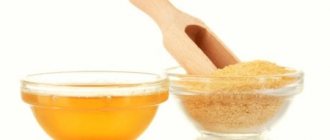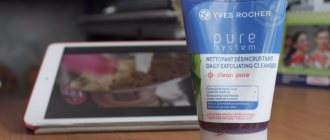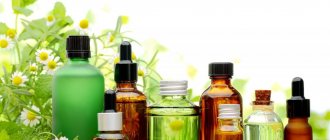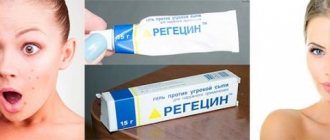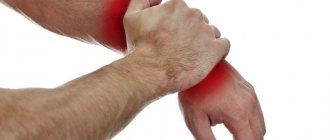Using Frozen Aloe Vera Cubes
Using frozen Aloe Vera cubes will help you remove wrinkles, skin blemishes, reduce skin inflammation, dark circles and bags under the eyes. After using Aloe Vera cubes, you will quickly notice that you look younger and more beautiful.
Using cosmetic ice from Aloe Vera helps to effectively solve several problems at once.
- Rejuvenation. Rub ice over your face, neck and décolleté along the facial massage lines both morning and evening to moisturize and tone the skin and avoid the appearance of expression lines.
- Preventing acne. Pimples, blackheads and blemishes often appear as a result of sun exposure or hormonal changes. Rub Aloe Vera ice cubes on the sore areas twice a day to relieve inflammation and reduce the number of pimples and rashes.
- Stimulation of blood circulation. Stable blood circulation promotes skin rejuvenation. Use Aloe Vera cubes daily.
- By using these cubes, you can tighten open pores and prevent acne. Aloe Vera ice cubes restore mobility and elasticity of pores.
- Relieving swelling, eliminating bags and bruises under the eyes. It is enough just to regularly wipe the area around the eyes with pieces of frozen Aloe.
How and why does it work?
Temperature changes from hot to cold cause the pores to first open, then sharply narrow. This tissue contraction tones the skin and produces a lifting effect. Rubbing your face with ice smooths out both fine and deep wrinkles - try it, you will definitely like the effect.
Cosmetic ice for wrinkles
Rubbing your face with ice smooths out both fine and deep wrinkles - try it, you will definitely like the effect!
Blood circulation improves on the surface of the skin and in deep tissues. We seem to awaken the skin from sleep, forcing it to renew and tighten more quickly.
The cryotherapy procedure is now popular in many salons. It is based on the same action as wiping your face with ice cubes, only it costs much more.
Cryotherapy at home
Ice awakens the skin, causing it to tighten and renew itself.
Another Way to Make Frozen Aloe Vera Cubes
In order to preserve natural Aloe Vera gel and use it not only for direct application to the skin, but also for adding to various recipes for homemade creams and masks, you can freeze the leaves not in pieces, but make an Aloe Vera gel from the pulp.
- To make the gel, you need to extract all the pulp from the Aloe Vera leaves.
- Place the pulp in a blender and blend very well until smooth and foamy.
- Then you need to pour this foamed natural gel into an ice mold and freeze it in the freezer.
- When the gel freezes, you need to remove the cubes from the mold and put them in a plastic bag that closes tightly and conveniently.
- You can store such cubes in the freezer for as long as you like, they do not lose their properties.
- If you want to use aloe vera gel for a mask or cream, then simply defrost the required number of cubes and the gel will be ready.
This video shows 2 different ways to make cosmetic ice from Aloe Vera.
Ice for face with aloe recipe
Aloe helps relieve inflammation, irritation, and various skin rashes go away. We keep the aloe leaf in the refrigerator (in a plastic bag) for 10 days. Then we cut off a piece and chop it with a knife. Add clean cold water to the aloe leaves (it should be 2 times larger in volume). Beat aloe with water in a blender. Strain the resulting liquid through a sieve and pour it into ice cube trays. Freeze it.
Ice for face with aloe (video):
cucumber ice for face
Benefits of Aloe Vera for the face (video):
Celandine ice for face
Even the name of this unique plant speaks for itself. Celandine helps in the fight against freckles and age spots, brightens the skin, and actively fights acne and pimples. A decoction is prepared from celandine, which is frozen in the form of ice cubes.
Watch a video about the properties of celandine for the skin:
Ice with calendula for face
Ice with calendula can relieve any irritation and inflammation from the skin. Calendula saturates the skin with micro and macroelements, promoting its renewal and rejuvenation.
Watch the video for a recipe for natural tonic and calendula ice cubes:
Kelp ice cubes for the face
Laminaria will help tighten the contour of the face and rejuvenate the face. Kelp contains vitamin C, vitamin A, niacin, coline, potassium, calcium, iron and many other beneficial substances and trace elements. To prepare cosmetic cubes, you need to pour a glass of boiling water over the crushed kelp, wait a little and put it in the refrigerator.
Mint ice for face
Mint ice for the face can refresh your face, tone your skin and give it a radiant appearance. The freshness of mint and the coldness of ice is the perfect combination for a morning wash. For dry skin, it is recommended to make ice from mint and milk. In this case, dried mint is brewed with hot milk, filtered and poured into cubes.
Rosehip for face in ice cubes
The vitamins contained in rose hips can slow down the aging process. It helps retain moisture in skin cells. First, prepare a rosehip decoction, which is then poured into molds and frozen.
Rosehip is a storehouse of vitamins for the face
Rice ice for face
Ice with olive oil for face
Questions and answers
I have dry skin, can I use Aloe Vera gel or Aloe Vera cubes?
Aloe Vera gel, as well as cubes from this plant, are great for any skin type. They perfectly moisturize both dry, normal and oily skin. But if your skin is very sensitive, then we recommend that you use thawed Aloe Vera gel (at room temperature).
Can I use frozen Aloe Vera cubes if I have symptoms of rosacea?
No, the use of ice on the skin is not recommended for this disease. Temperature changes and exposure to cold are harmful to the skin, so defrost the gel or even aloe pieces and use them at room temperature.
How long can you leave Aloe Vera gel on your skin?
You can apply the gel and leave it on for at least 20 minutes. The effect of Aloe Vera is so delicate that if desired, it can be applied before bed and washed off in the morning when washing.
How long can the finished product be stored in the freezer?
Frozen Aloe and also gel can be stored in the freezer for up to 6 months without any problems.
Why should you keep cut Aloe Vera leaves in water?
When you change the water in which the cut leaf is located, you will see that at first the water will be brown, the next will be yellowish and only the last portion of water will be clear. It is believed that in this way excess iodine compounds present in the plant are released. These substances can cause irritation, allergic reactions, and can burn sensitive skin. Therefore, you need to soak the leaves to get rid of aggressive substances and leave only useful ones.
The benefits of ice for facial skin
The beneficial effect of ice on the skin of the face is based on the processes that occur in its structure. Due to cooling, blood vessels located close to the surface narrow, and those located deeper, on the contrary, expand. When the effect of ice stops, the skin gradually warms up and blood fills the upper vessels. This improves blood circulation and stimulates metabolic processes.
Especially useful are ice cubes for the face with fillers, which are juices (only natural), decoctions of medicinal plants, oils, and other components rich in nutrients. For each skin type, the composition is selected individually. Using ice cubes for washing and massage has a positive effect on the skin:
- Oily shine disappears, the face becomes matte;
- Small wrinkles and folds are smoothed out.
- The sebaceous ducts narrow.
- Pigmentation becomes less pronounced.
- Firmness and elasticity are restored.
- The tone is evened out and a healthy glow appears.
- The surface becomes smooth and velvety.
Proper use of ice for the face is as effective as salon procedures and expensive cosmetics.
What herbs are good for the face
Each herb has its own beneficial properties and brings the following benefits to the skin:
- mint – refreshes, relieves swelling and inflammation
- chamomile – soothes irritations, removes inflammation, makes the face matte and more elastic
- sage – cleanses clogged pores and tightens them, treats acne
- lavender – rejuvenates, activates metabolism in cells
- linden – moisturizes and softens the skin
- aloe – moisturizes, has antibacterial, anti-inflammatory properties, neutralizes strong sebum secretion
- calendula – has antiseptic, anti-inflammatory properties, relieves acne, soothes irritations
- parsley – whitens skin
- nettle – cleanses the face, cares for oily skin
Harm of ice to facial skin and precautions
Ice washes are not suitable for everyone. Contraindications are:
- rosacea, other vascular diseases, as well as their close location to the surface;
- eczema;
- psoriasis;
- very thin or dry, dehydrated skin with flaking;
- open wounds, cracks.
You cannot use ice cubes on your face all the time; you must take breaks. Excessive exposure to cold is bad for the health of the epidermis. Therefore, the use of ice is not recommended in the autumn-winter period.
To reduce the risk of skin hypothermia, after washing with ice, you should not immediately go outside, you need to wait 1-1.5 hours for the epidermis to recover. It is believed that it is better to allocate time for such procedures in the summer, when it is hot. Side effects from excessive cold may include:
- Blood microcirculation disorders.
- Development of vascular diseases, in particular rosacea.
- Swelling.
- Severe peeling, cracking.
- Enlarged sebaceous canals (pores).
- Problems with the secretion of sebum and sweat.
- Flabbiness, loss of elasticity.
- Early appearance is a sign of aging.
Facial ice will cause harm if precautions are not taken when using it. Our grandmothers also knew such a cosmetic product as ice for the face. The benefits of such procedures are obvious, but we must remember that everything is good in moderation. The short-term effect of cold invigorates, tones, improves blood circulation, increases elasticity, evens out tone and rejuvenates. But with excessive exposure, the effect will be the opposite.
What you need to know about the procedure
Preparing such a homemade cosmetic product is simple: a chilled decoction of herbs, cereals, tea or juice is distributed into the cells of the mold and sent to the freezer compartment. The cubes “reach” there for 8-10 hours.
5 cooking rules
When preparing ice to wipe your face against wrinkles, certain rules must be followed. There are five main recommendations.
- Only clean water. Tap water is not suitable. You need spring, melted, mineral without gas or filtered.
- Suitable forms. For freezing, you need to use special ice molds; silicone ones are the most convenient.
- Base options. You can simply freeze the water. However, herbal facial ice will be more beneficial. Fresh juices of vegetables and fruits are also used. As well as coffee, tea, cereal infusions, and dairy products. Cosmetic oils are added to the main liquid.
- Need to dilute with water. Some juices should be diluted halfway with water before freezing. This applies to citrus fruits and berries, since when they come into contact with sensitive skin, inflammatory processes can occur. Juices of cucumber, watermelon, aloe, and grapes can be frozen undiluted.
- Possibility to add a “handle”. The ice melts quickly in your hands. Therefore, for the convenience of using the product, you can listen to this advice: when freezing, when the liquid has already “set” a little, stick a cotton swab or toothpick into each of the compartments of the mold. This will be a kind of “handle”. By holding it, you can easily remove the cube from the mold and distribute the product on your face.
Features of application
During the ice cosmetic procedure, you should also adhere to certain recommendations. For example, if you froze the product without cotton swabs, you can hold the cube with tweezers. But then you need to act carefully so as not to get hurt. What else is important to know?
- Do not overexpose. You need to wipe your face quickly: do not linger on each area for more than four seconds.
- Walk along the right lines. Move the cubes from the chin to the earlobes. Then from the corners of the mouth and nose to the middle of the auricle. Follow from the middle of the forehead to the temples. Work from the inner corners of the eyes, along the upper eyelids to the outer corners, and then along the lower eyelid to the nose. Process the nose, smoothly moving from the back to the sides and wings.
- Do not press. You shouldn’t press the frozen liquid tightly to your face, but you need to slightly “smooth out” each fold.
- Cover other areas. You need to wipe not only your face, but also your neck and décolleté.
- Don't dry yourself. After the procedure, you should not wipe your face with a towel, performing diligent movements; just pat the skin dry.
- Do not apply cream. There is no need to apply cosmetics immediately after an ice session. Pores will be closed after exposure to cold and the cream will not be absorbed. Let your face return to normal: let it pass for at least half an hour or an hour.
In addition to benefits for the face, ice can also cause harm. “Cold” sessions are contraindicated for sensitive dermis, with rosacea, the presence of wounds and cracks on the face, as well as with individual intolerance to cold or the components on the basis of which ice is prepared. Also, do not conduct sessions in winter if you plan to go outside immediately.
Video on the topic Ice cubes for toning and nourishing the skin
Contraindications
In addition to its beneficial properties, the product also has contraindications:
- sensitive skin
- if you are sick with the flu or a cold, then you should not use
- rosacea
- dilated vessels
- problems with the thyroid gland (in this case, you should not wipe your neck)
- cannot be used in winter an hour before leaving the house to go outside in the cold
- irritated, dehydrated skin
- microdamages on the face (abrasions, scratches, wounds)
- individual intolerance to grass
Indications for the use of herbs for the face
There are a lot of herbs. Different herbs are suitable for each skin type. Therefore, decide what problem you want to cure and then choose a herb from this list:
- for oily skin – mint, aloe, burdock, horsetail, nettle, plantain, linden, oak bark, birch
- for dry – calendula, thyme, oregano
- for problematic acne - calendula, plantain, aloe, St. John's wort, lavender, chamomile, coltsfoot, string
- for aging skin against wrinkles – chamomile, rosemary, sage, coltsfoot
- for skin with pigmentation – parsley and dandelion
- for facial cleansing – nettle and rowan
